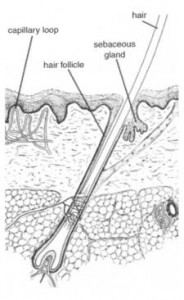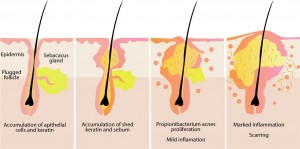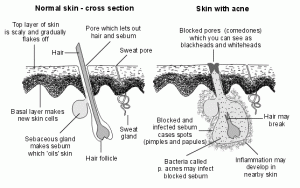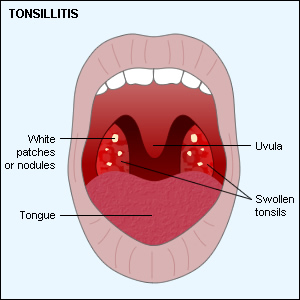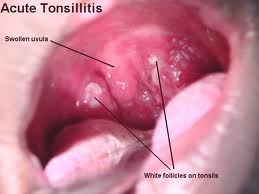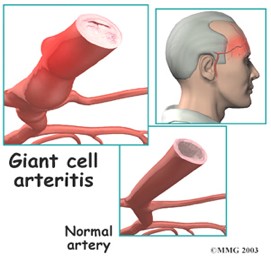 Picture 1
Picture 1 – Temporal Arteritis Picture
Source – davidson
Temporal Arteritis is a complicated condition that leads to swelling of the blood vessels in the face. It involves chronic inflammation of the medium and large arteries in the head. These arteries supply oxygenated blood to different parts of the brain and the head vital for proper functioning of the body. The condition also impacts the temporal arteries that are present in the temple region close to the eye.
Temporal Arteritis is supposed to be an autoimmune disease. This is because in many cases of this disease, the cells and tissues of the body are seen to turn against the system itself. The exact reason for this is unknown, though age is held to be a causative factor. In most people with Temporal Arteritis age is found to hover above 50 years. The condition is generally found I people who are over 50 years old.
Temporal Arteritis is also known as Cranial Arteritis and Giant Cell Arteritis. It is a very rare condition and affects only 1 person out of a population of 10,000. The disease is seen mainly in females rather than males. Women are 2-3 times more at risk of developing this disease than men.
Symptoms of Temporal Arteritis
There are a number of Temporal Arteritis Symptoms. Some of the notable Giant Cell Arteritis symptoms include :
Headache
Patients of Giant Cell Arteritis usually suffer from persistent headache, though it may be temporary in some cases. In Temporal Arteritis headache arises if the large arteries are affected.
Jaw Pain
The affected people may experience pain in the jaw while chewing.
Fever
The condition may also lead to increased body temperatures in the sufferer.
Shoulder Pain
There may also be pain in the shoulder area of the sufferer.
Hip Pain
The person may experience pain in the hips. This may create problems while sitting.
Blurred Vision
The person may also suffer from a lack of clear vision. The eyesight may be affected because of Temporal Arteritis. In Temporal Arteritis vision loss is usually moderate.
Diplopia
The sufferer also usually experiences a double vision due to this syndrome.
Blindness
Because of Temporal Arteritis blindness may also ensue. The person may suffer from blindness in one eye or both eyes.
Scalp Pain
The affected person commonly experiences tenderness and hypersensitivity in the scalp region.
Throat Pain
The patient may also feel a painful sensation in the throat area.
Tongue Pain
In some cases, the person can also have a painful feeling in the tongue region while talking or chewing foods.
Eye Pain
In patients with Temporal Arteritis eye pain can also arise due to chronic inflammation of the large arteries in the temple.
Necrosis
There may also be cases of destruction of living cells in a particular region of the body.
Weight Loss
There may also be a loss of weight and profuse sweating in the suffering person without any exercise. Patients can lose over 5% of their total body weight.
Cough
People with Temporal Arteritis can also suffer from a bad case of dry cough.
Tinnitus
In people affected by Temporal Arteritis Tinnitus also appears commonly. In case of an acute tinnitus, there is a ringing or booming sensation in the ears.
Fatigue
The person may also experience extremes tiredness due to this syndrome.
Vasculitis
In some cases of Temporal Arteritis Vasculitis (another inflammatory condition of the blood vessels) may also arise in later stages.
Strokes
In extreme cases of Temporal Arteritis stroke may occur leading to death of the patient.
Temporal Arteritis Causes
 Picture 2
Picture 2 – Giant Cell Arteritis
Source – dermpedia
It is not known why Temporal Arteritis actually arises. However, several factors have been associated with this condition. Some of these supposed causes of Temporal Arteritis or gaint cell arteritis are :
Impaired Immune Response
A defective immune response has been associated with this condition.
Infections
The disease has also been found to develop after an infection.
Drugs
High doses of antibiotic medicines are also seen to result in this disorder.
Polymyalgia Rheumatica
This medical syndrome results from a swelling of blood vessels. Patients with
Polymyalgia Rheumatic may develop Temporal Arteritis in some cases. It is due to Polymyalgia Temporal Arteritis suffer from stiffness or pain in the hips, shoulders and neck. In rare cases of Temporal Arteritis polymyalgia rheumatica may be a causative condition.
Heredity
As a cause of Temporal Arteritis hereditary factors are also considered. According to the National Institute of Health (NIH), some evidence suggests that the disease may be caused due to genetic reasons.
Temporal Arteritis Diagnosis
The diagnosis of Temporal Arteritis usually begins a biopsy. A biopsy of the temporal arteries is done for a proper diagnosis. The patient is injected with anesthesia before the Temporal Arteritis biopsy and the physician removes a section of the artery to examine it for inflammation.
Other Temporal Arteritis tests for diagnosis include Computed Tomogrphy (CT) scans, Magnetic Resonance Imaging (MRI) scans and blood tests.
Some other physical tests may also be carried out to measure the extent of inflammation. The doctor may also rely on observation and medical history of the patient for a comprehensive diagnosis.
Treatment of Temporal Arteritis
The Temporal Arteritis treatment is usually done with the help of corticosteroids. Corticosteroid medicines are generally used to combat inflammation. Doctors normally start using these drugs as soon as the condition is diagnosed. It also reduces the risk of blindness.
Oral steroids and intravenous steroids are also found to be quite effective in Giant Cell Arteritis treatment. Intravenous steroids are particularly useful in treating acute visual loss.
Temporal Arteritis Natural Treatment
Physicians also advise patients to use some natural remedies along with medicines for a faster recovery. Vitamin D and Calcium supplements are very useful in curing the condition. They are also effective in counteracting the long-term effects of Corticosteroid medicines.
Temporal Arteritis Prognosis
For patients with Temporal Arteritis recovery is usually complete. People generally recover fully, though treatment needs to be carried out for 1-2 years or a longer period of time. This prevents any chance of Temporal Arteritis recurrence. When properly treated, Giant Cell Arteritis rarely makes a comeback.
Temporal Arteritis Risk Factors
Many serious complications may arise from Temporal Arteritis and strokes can be just one of these. Other dangerous health issues include blindness, paralysis and aortic aneurysm. In worst cases, it may even lead to death.
It is because of the potentially serious complications that Temporal Arteritis needs to be treated as soon as it is diagnosed. Early treatment prevents any serious physical damage and helps the patient make a faster recovery. If you have persistent headaches or any other symptoms characteristic of Temporal Arteritis, it is necessary that you begin the treatment immediately.
References :
